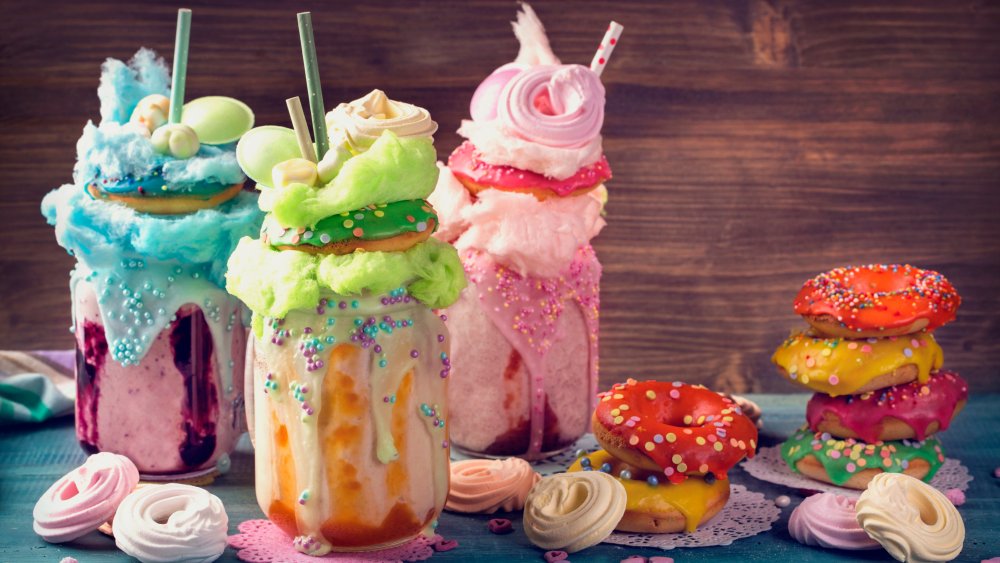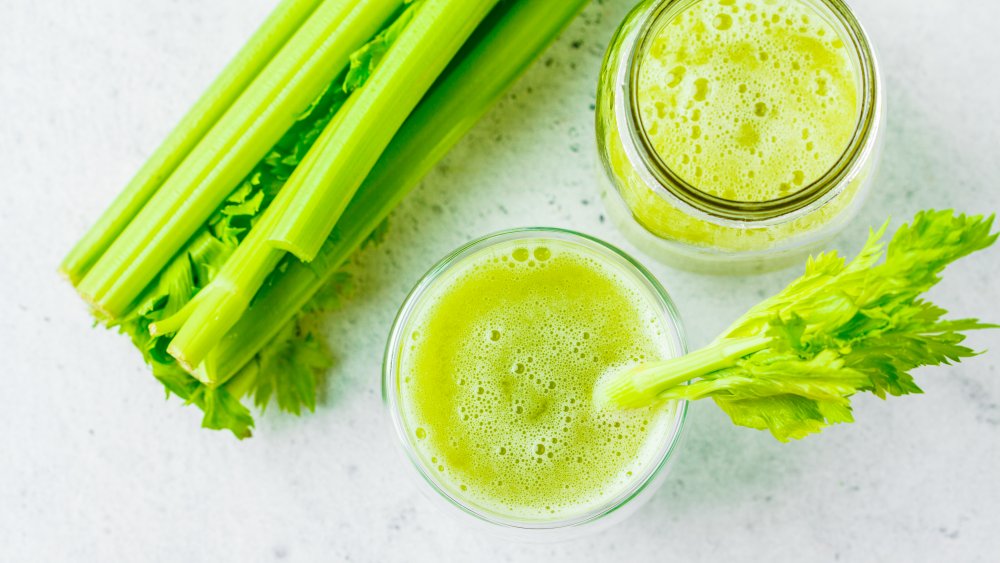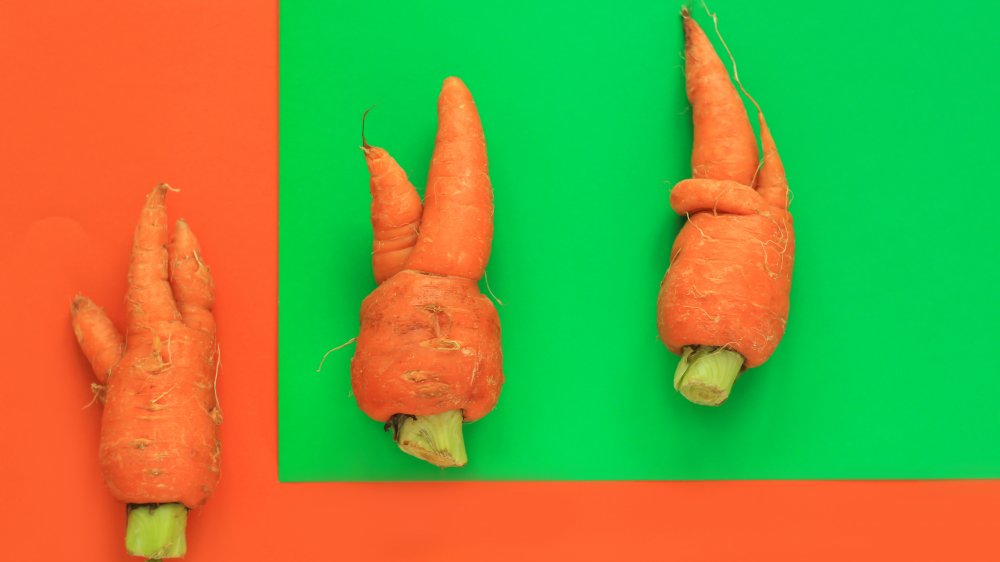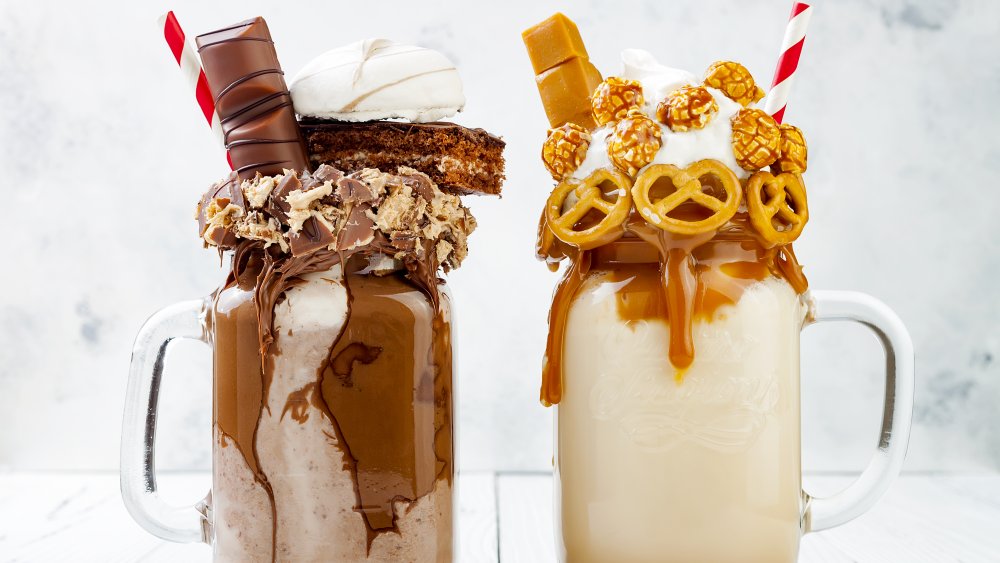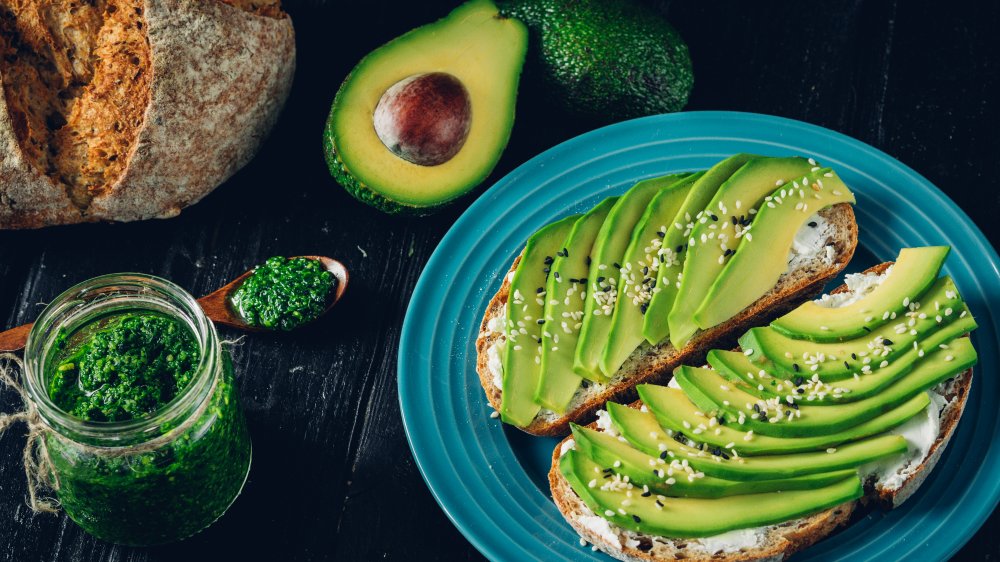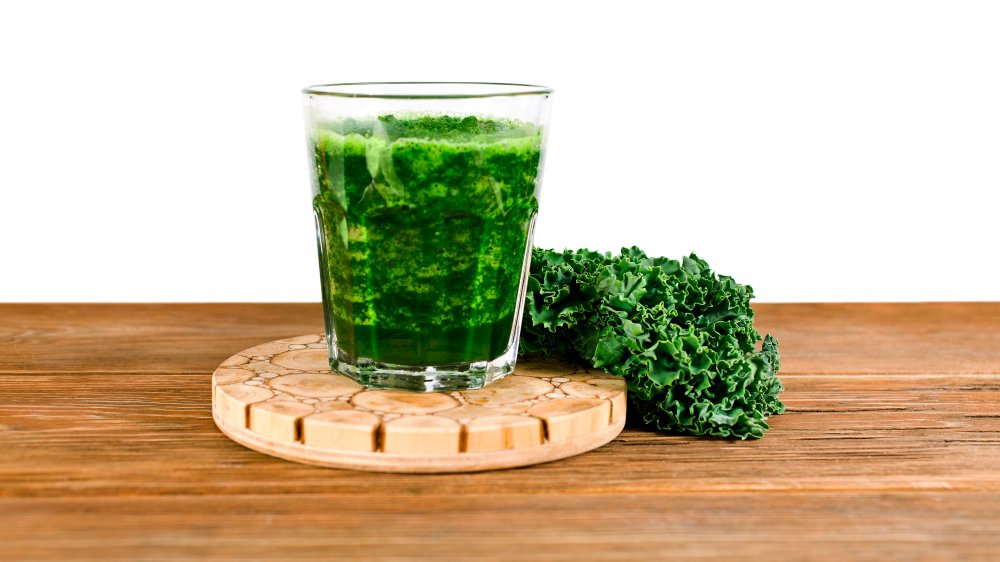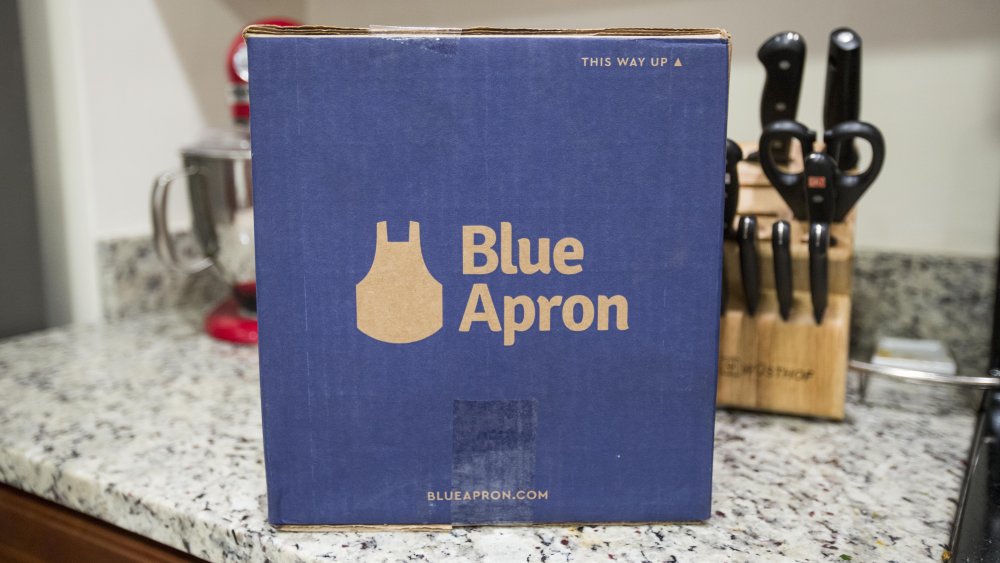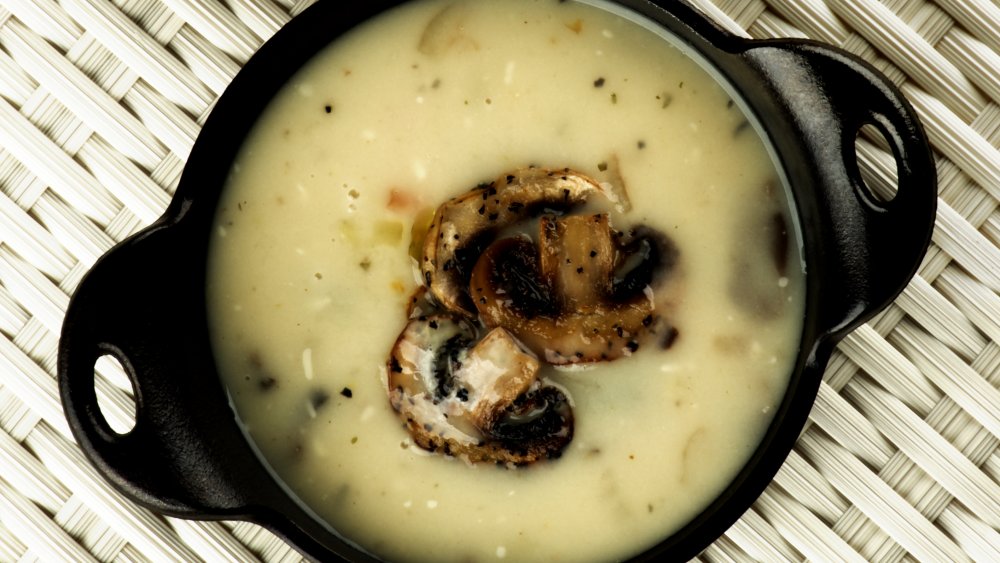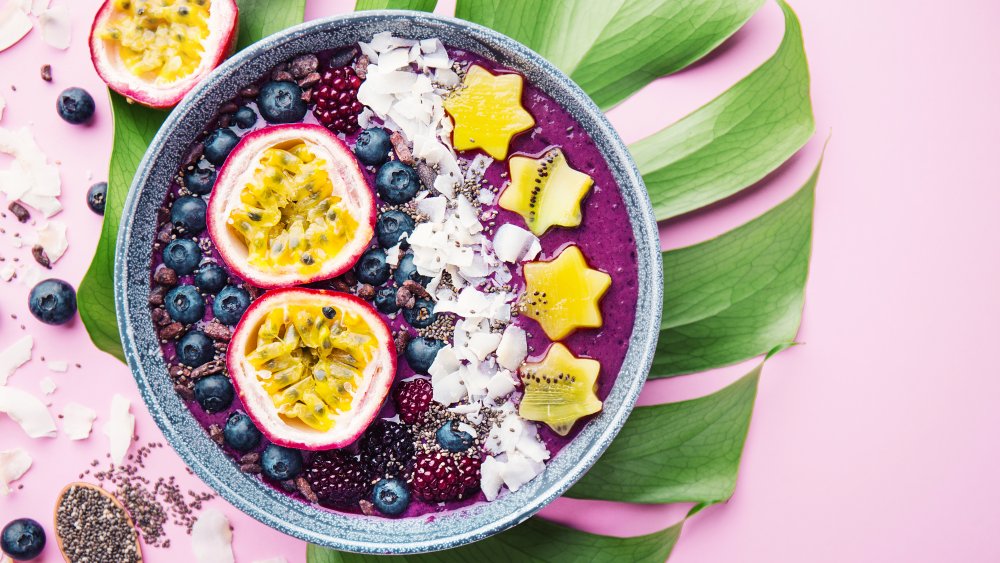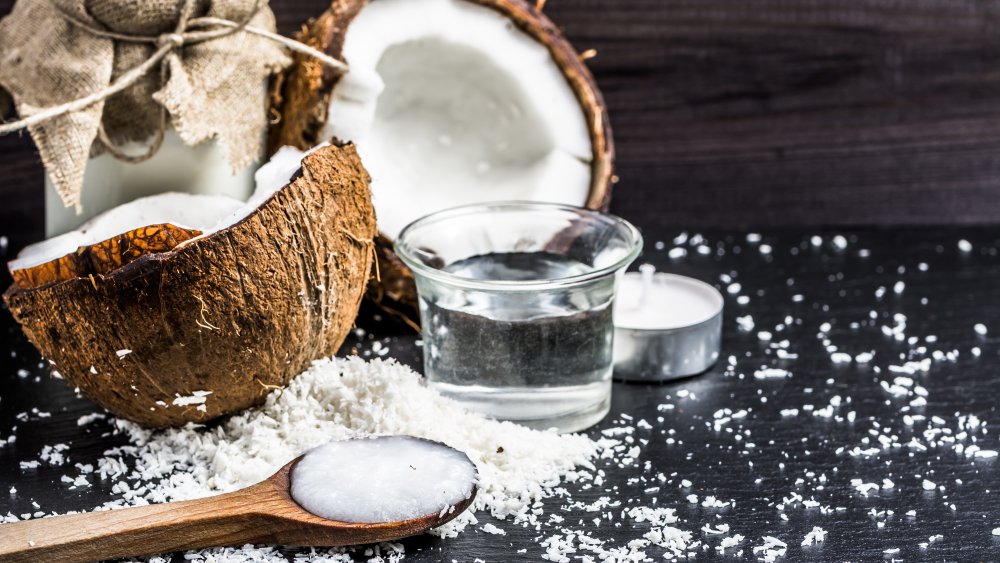Food Trends From 2019 That No One Will Remember In 2020
Food trends come and go — quickly. One day, they're trending on Instagram and they're all over your social media news feeds, and the next day they're replaced by the next bigger and brighter thing. Oh, that hashtag? That was so yesterday.
And it's not just normal, everyday people on social media spreading these trends far and wide. Celebrities of all kinds are also quick to jump on the bandwagon, and there's plenty of people out there who are more than happy to hurry up and channel their inner Kardashian or Paltrow.
And 2019 has been a strange year, that's run from the (reportedly) uber-healthy to the (definitely) super unhealthy. It's also run from the bright to the beige, and if there's anything to be learned from looking back at 2019's food trends, it's that it was definitely a year of extremes.
But not all of these trends are going to make it into 2020, so here are our predictions of what food trends are going to be dropped along the wayside.
Celery juice will leave breakfast menus in 2020
While most people might opt for a giant cup of coffee first thing in the morning, 2019 saw the emergence of a different sort of trend: grabbing a glass of celery juice instead. And there were a lot of people who picked up on it, from a Kardashian (or two, who knows!) to Gwyneth Paltrow and Pharrell Williams. It's all over Instagram, it's been promoted as a miraculous cure-all, and it was a staple of 2019's "morning selfie" game.
And it came from a weird place. Vanity Fair says it first started thanks to Anthony William, the "Medical Medium." His claim to fame is the belief that he gets medical advice from spirits who are more medically advanced than we are, then spreads the word — in this case, first through Paltrow's Goop. It's been said to help everything from psoriasis and acne to chronic fatigue syndrome, acid reflux, strep, and shingles, but does it really?
University of California, Davis research scientist Rachel E. Scherr told The New York Times, "There's no scientific evidence to support any of the claims being made."
Sure, it's pretty good for hydrating you, but so is water. It's also lower in vitamins than other juices, like carrot and tomato, but we all know scientific evidence (or lack thereof) isn't enough to kill a trend. What will end this one is the celebrities posting that no, it really hasn't helped them after all.
Ugly food will be outed in 2020
Food waste is a huge problem, and according to The New Republic, around 30 million acres of cropland and 4.2 trillion gallons of water go into growing food that never gets eaten. The Guardian says that a massive amount of food goes to waste just because it's not perfect, and filling social media feeds with ugly but still perfectly delicious food seems like a great solution, especially when you can have companies like Hungry Harvest and Imperfect Produce deliver your do-gooding boxes right to your door, for all the world to see.
But there are a few huge problems with this that might spell the end of the ugly food movement. Most of the food in those boxes isn't food that would actually be wasted; it's the same food that would otherwise be sold to restaurants, canneries, and processed food companies. No one cares what a cabbage looked like before it became sauerkraut, after all, and your ugly produce is just produce that would have been used anyway, and probably processed into a longer-lasting form.
The Kitchn says there's another problem: because of ugly food's imperfect nature, these weird fruits and veggies are less resilient and will get more damaged, bruised, and smashed during shipping. Instead of being used for salsa and sauces, they're often bought as "ugly food"... then thrown away. Ugly food isn't the problem, and as that becomes more well-known, the trend might disappear.
Freakshakes will fall in 2020
Freakshakes look pretty cool and hey, no one expects them to be healthy, right?
These insane, over-the-top milkshakes have been all over Instagram for a while, but the reign of the freakshake may be coming to an end in 2020 as it's coming out just how bad they really are.
Let's start out by saying that the American Heart Association recommends men limit their daily sugar intake to 36 grams, and women limit theirs to 25 grams. In a 2019 episode of Tricks of the Restaurant Trade (via LadBible), it was revealed that a freakshake — on average — comes with a shocking 95 grams of sugar. That's just an average, and some were found to contain up to 156 grams of sugar. At those levels, it doesn't just turn into fat, it can cause liver damage, kidney damage, and type two diabetes.
And restaurants are beginning to respond to that. Toby Carvery and Frankie and Benny's, for example, were just two chains that announced they were going to be taking freakshakes off the menu in 2019.
Some people on social media weren't thrilled with the idea of these sugary monstrosities going away, but it seems as though freakshakes have finally run their course.
Avocados might be on their way out in 2020
Avocados? Going away? Say it ain't so!
While avocados probably aren't going to ever disappear completely, The Wall Street Journal suggests their popularity has been fading in 2020. In 2019, Australian agriculture group Costa faced some dire news: demand was dropping. And the swing was sudden, with avocados going from their fastest-growing sector into a drop that resulted in plunging stock prices, pushed low by the sudden announcement of a surprise loss in profits.
But that's not the only thing that's going on with this darling of Instagram and toast. According to the Independent, crops like the avocado are bad news for the planet. It's a complicated problem, but here are the basics: avocado flowers are only open for a very short time, and that means they're a terrible food source for pollinators. Bee Aware says that only pollinators who forage for nectar will interact with an avocado, and when you take huge patches of agricultural land and turn them into avocado farms, you're hurting the pollinators we depend on.
The Loop says more and more forests are being cut down and replaced by avocados, and the irony here is that the same demographic that loves their avocado toast also loves the planet — so this one's going to be fading sooner than later.
We'll be seeing less kale in 2020
From smoothies to salads, Instagram has been showing off the kale. Just #kale alone has almost 3.8 million hits, but according to The Atlantic, the world's love affair with this one-time salad bar garnish that looks better than it tastes might finally be over.
Kale has been popular for a long, long time, and we can thank Gwyneth Paltrow and her kale chips for this one, too. But if you look to Google instead of Instagram, you'll find that searches for kale dropped drastically at the end of 2019, back to below where they came in before Paltrow appeared on Ellen, made some chips, and sent the foodie world into a tizzy.
That's about the same time restaurant critic Adam Platt went on a quest to force himself to enjoy the idea of a lunchtime, take-out salad. He found out these salads were still super trendy among New Yorkers of a certain demographic (i.e., also trendy), they were expensive, and not terrible. He also learned (via Grub Street) that when it came to leaf preference, kale was on its way out.
Taking its place were grain bowls, and this — coupled with a slow but steady decline in sales numbers — suggest that if you hate kale, you'll be able to proclaim it loud and clear in 2020.
Meal kits might slip in 2020
Meal kits seemed like the perfect fix for millennials who worked long hours but still wanted something different and healthy when they got home. And for a while, it was insanely successful: Blue Apron was worth an estimated $2 billion just three years after they opened their doors and started mailing. But things may change for meal kits in 2020.
In 2019, Eater was reporting there had been a shift in attitudes. Mail-order meal kits have started to slip, in large part due to the cost and to the sheer amount of packaging and waste they generate. But there's something else at work here, too, and that's the fact that many people who relied on them started to enjoy cooking.
Meal kits have been a trendy set of training wheels for many people, and once they learn the skills and flavor combinations they're handed through their subscription, they realize they can cancel, make a list ahead of time, spend minimal time (and less money) doing their own shopping, and make their own meals.
Blue Apron alone has seen their stock plummet and a huge percentage of their customer base disappear; according to PYMNTS, they saw a 33 percent decline in revenue in 2019. And PYMNTS says it's a trend they're seeing across the meal kit market: people love them, but only about 38 percent of people who try them will stick with them... and that's the opposite of trendy.
Beige food will feel bland again in 2020
Color trends come and go faster than food trends, and in 2019, there was a bit of collision between the two worlds. Even as the fashion gurus writing for publications like InStyle lauded the pretty boring beige choices made by royals and A-list celebrities alike, Eater London took a look at just what trends were being set across the city's restaurant scene.
Instagram was taken over by foods that were just as beige, with dishes like stout pies, stews, soups, and gravy-covered dishes welcoming in the autumn months. Sure, there might be something comforting about thick, mushroom-filled gravies, and creamy, hearty soups, but according to Benchmark, that's going to be one short-lived trend that might not make it much farther than Christmas.
They predict that it's going to be bright colors in 2020, and that it's going to be driven by the idea that colorful food is going to stand out even more against a social media backdrop that's getting bigger and bigger by the day. Will it? Time will tell, but one thing is for sure: eye-catching, beige is not going to be in by the end of 2020.
We'll know the truth about acai bowls in 2020
There are more than enough perfectly-made acai bowls on Instagram to give anyone some serious breakfast envy, but here's the thing — it's starting to come out that they're not nearly as good for you as most people think they are, and that news will likely spread more in 2020.
And that's why they're trendy, right? They're customizable, very pretty, and healthy. In all fairness, they can be healthy if you make them at home, but if you go out and order one from your favorite (undeniably trendy) breakfast stop, you might be surprised. Just take it from Ilana Muhlstein, the head of UCLA's Bruin Health Improvement Program (via Shape): "You should really look at acai bowls as more of an occasional treat, not something you'd have as a meal. Think of them as a replacement for ice cream."
Wait, what? She says that while acai is, indeed, good for you, most of the bowls you can buy contain upwards of 50 grams of sugar — twice what the American Heart Association says you should have in a day. Women's Health Magazine reported similar findings; their investigation into Costco's acai bowl suggested diners were getting around 41 grams of sugar in each bowl, and the nutritionists they talked to said not only are they not a good choice, but they'll leave you feeling hungry soon after finishing.
In order to make them healthy, you'd have to use water instead of juice, savory veggies instead of sugar-filled fruits, and limit the size. Not so Instagrammable now, is it?
Coconut oil is out for 2020
Coconut oil is one of those food trends that's held on for a surprisingly long time, especially considering the undeniable fact that it's somewhere around 80 to 90 percent saturated fat (that's why it's solid at room temperature), and that including high levels of saturated fats in your diet can lead to the development of things like high cholesterol. The Harvard Medical School recommends only using it in small amounts when the flavor is desired, but that's a far cry from how it's been used over the last few years.
But now, it's looking like 2019 might be the last year you see coconut oil riding high on the wave of trendiness, as its popularity is expected to take a major dive in 2020. According to The Wall Street Journal, challenges to the health claims made alongside the use of coconut oil have resulted in plunging demand. Prices dropped more than half during 2018, and imports are down as well. Demand, they say, has peaked. Where it was once driven by trendy drinks like bulletproof coffee and smoothies, controversy over health benefits means that many people are looking elsewhere.
